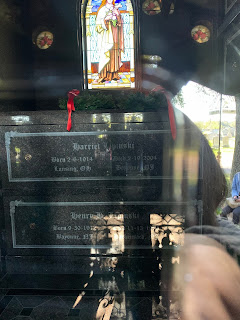The person I chose to do
research on is John Geddes. John Geddes was born on December 25, 1777
(Christmas day) in Charleston, SC and he died on March 4, 1828 of a stroke. He
is buried at First Scots Presbyterian churchyard in Charleston, SC. His
religion was known as Presbyterian and he represented the Political Party as
Democratic-Republican. I chose him because of his historically background from
around the Charleston area.
Geddes was the son of Scots-Irish
merchant Henry Geddes. Geddes was married to a woman named Harriet Chalmers
first who died in 1803. He then married Ann Chalmers in 1805, who died the
following year. The marriages produced at least 3 children. He received his education at The College of Charleston,
but I also saw in research that he studied at South Carolina College (now the
University of South Carolina). He later studied Law and was admitted to the bar
in 1797.
 |
| Death card found in the Public Library |
Geddes was very active
in Politics. He won the election for South Carolina’s House of Representativesand became a speaker of the house for two years in 1808. In 1816, he continued
to be a member of the House of Representatives until his election to the South
Carolina Senate. He was the 47th Governor of South Carolina from 1818 to 1820.
After his two-year term
in 1820, he was given the position as Brigadier General of the South Carolina
militia. Later in his years, he continued to remain active in politics as he
also ran for mayor of Charleston in 1823 as he served from 1824-1825.
Geddes grave site at the
First Scots Presbyterian church is very old and not well kept. The site now is
very hard to see but it is noticeable once found. I selected him because he was a very influential person in Charleston’s political outlooks. He made a difference in
Charleston’s views of society.















































